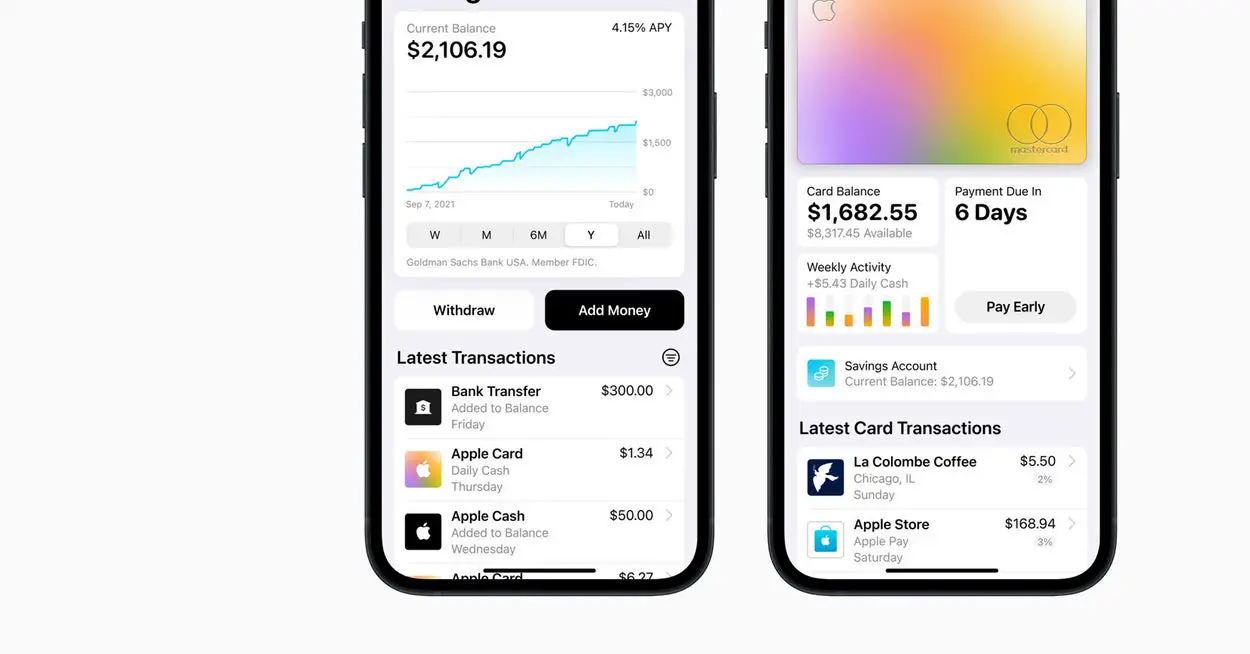Introduction
eCommerce has transformed how we shop, making it easier to browse and purchase products online from the comfort of our homes. However, as with any retail experience, there is always the possibility that a product may need to meet our expectations or requirements. This is where eCommerce returns solutions come in. eCommerce returns can be a complex and costly challenge for businesses, requiring careful management and optimization to ensure a positive customer experience and minimize financial impact.
As customers increasingly turn to online shopping, the need for a streamlined and efficient returns process has become more critical than ever. In the world of eCommerce, returns are an inevitable part of doing business. Understanding the factors contributing to returns and best practices for managing them is key to success in eCommerce. In this article, we will explore the ins and outs of eCommerce returns and provide tips and strategies for optimizing your returns process.
What are eCommerce Returns?
eCommerce returns refer to returning a product to the seller or retailer after a purchase. Customers return products for various reasons, such as damaged or defective products, incorrect product delivery, or simply because the product did not meet their expectations. Returning products can be time-consuming and frustrating for both customers and businesses.
However, it is an essential part of the eCommerce process, and businesses must be prepared to handle returns efficiently. Returns have become a significant challenge for eCommerce businesses. They result in lost sales revenue and incur additional business costs, such as return shipping, restocking fees, and inventory management. Returns can damage a business’s reputation and customer loyalty if not handled effectively.
One of the major reasons for returns is the discrepancy between the product’s online description and the actual product received. eCommerce returns can be costly and time-consuming for retailers and customers. Retailers may need to absorb the cost of return shipping and may lose out on potential sales if the returned product cannot be resold.
Customers may experience frustration or inconvenience if the return process is complicated or takes a long time. To mitigate the impact of eCommerce returns, retailers may offer free or discounted return shipping, provide detailed product descriptions and images, and offer virtual try-on or sizing tools. Customers can also take steps to minimize the likelihood of returns, such as carefully reviewing product descriptions and sizing information before purchasing.
Ecommerce Return Stats You Should Know
eCommerce Returns Account for 20-30%
The average eCommerce return rate, according to eMarketer, is between 20-30%. As a result, businesses should optimize their return process to minimize costs and satisfy their customers by reducing their return rates.
Free Returns or Exchanges Are the Second Biggest Factor Influencing Buyers’ Decisions
In a report by Walker Sands, 54% of buyers said they were more likely to buy from a brand if they offer free returns or exchanges. As a result, free returns are important to attracting and retaining customers.
41% of Consumers Say They Have Purchased Multiple Items Intending to Return Some
In a report by Narvar Consumer, 41% of consumers said they had bought multiple items intending to return some of them. Due to this trend, businesses can experience increased costs, so a return policy is essential.
9 out of 10 Online Shoppers Cite Product Description as Extremely or Very Important When Purchasing
A study found that nine out of ten online shoppers rate product content, like descriptions, as important when deciding which product to purchase. To minimize the number of returns caused by customer dissatisfaction, you must ensure that your product descriptions are accurate and high-quality.
Self-service Resolutions Accounted for 70% of Pawz’s Tickets
Pawz resolved 70% of tickets through self-service. Using self-service options for returns can improve efficiency and reduce costs for businesses.
69% of Automated Resolutions Were Achieved Through Brute Force Training
69% of automated resolutions were achieved through Brute Force training. Businesses can reduce the manual work involved in return processing through automation, increasing efficiency and lower costs.
8 in 10 Consumers Consider Referring to Your Returns Policy Before Making a Purchase
With 8 in 10 consumers reading the returns policy before purchasing, an effective and clear returns policy is essential. 72% of consumers say a simple return experience makes them more likely to shop from a merchant again in the future. A well-defined return policy can help build customer trust and loyalty, increasing sales and customer satisfaction.
You Might Also Be Interested In:
Should I Offer Free Returns?
As an eCommerce retailer, deciding whether or not to offer free returns can be a challenging decision. We already saw earlier in the stats that offering free returns is beneficial, and it can help improve customer satisfaction and brand loyalty and increase the likelihood of repeat purchases. At the same time, free returns can be expensive and time-consuming for retailers and hurt profits. Ultimately the decision to offer free returns depends on the specific business model and target market.
If you operate in a highly competitive market, offering free returns may be necessary to remain competitive and attract customers. Alternatively, if you specialize in high-end or niche products, offering free returns may not be necessary, as customers may be willing to pay a premium for your products or services. It is crucial to have a clear and transparent returns policy in place. This policy should outline the conditions under which returns are accepted, the time frame for returns, and any associated costs or fees.
What Should Be Done on Order Being Returned?
When an order is returned, there are several steps that retailers can take to manage the process effectively and minimize the impact on their business.
Confirm the Condition of the Returned Product
Before processing a refund or exchange, confirming that the returned product is in its original condition and meets the requirements outlined in your returns policy is crucial. This may involve inspecting the product for damage or signs of wear and tear. If the product is not in its original condition or does not meet the requirements, you may need to withhold the refund or exchange and contact the customer to discuss further. Providing clear guidelines for the condition of returned items in your returns policy can help prevent confusion and manage customer expectations.
Process the Refund or Exchange Promptly
Customers expect a hassle-free return process, and prompt processing of refunds or exchanges can help improve their experience. Process refunds or exchanges as quickly as possible and within the timeframe specified in your returns policy. Providing automated email updates or notifications can also keep the customer informed of the status of their return and increase transparency.
Restock the Returned Product
If the returned product is in good condition and can be resold or restocked, it can help recover some of the costs associated with the return. However, ensuring the product is properly sanitized and inspected to meet your quality standards is important before restocking. Consider having a separate area or process for handling returned products to minimize the risk of contamination. Properly restocking returned products can also help reduce waste and contribute to a more sustainable business model.
Analyze the Return Data
Analyzing return data can provide valuable insights into customer preferences, product quality issues, and potential areas for improvement. Reviewing your return data can help you identify patterns and trends, such as which products are most commonly returned and why. Use this data to inform your product offerings, marketing strategies, and customer service processes. For example, if a particular product is commonly returned due to quality issues, you may need to re-evaluate your supplier or manufacturing processes.
How To Reduce eCommerce Returns and Maximize Revenue?
eCommerce returns can be costly for retailers in terms of time and resources. While some returns are inevitable, there are several steps that retailers can take to reduce their return rates and improve the overall customer experience. Below are some of the eCommerce returns best practices:
Provide Detailed Product Information
Detailed product information is essential to help customers make informed purchasing decisions and reduce the likelihood of returns. Customers want to know what they are buying, and the more information you provide about your products, the more confident they will feel about their purchase. This can include detailed product descriptions, high-quality product images, videos, and product specifications.
Offer Product Demos or Trials
Offering product demos or trials can be an effective way to reduce returns and improve the customer experience. By allowing customers to try your products before they buy, they can better understand the product and its features. This can help reduce the likelihood of returns due to customer dissatisfaction or misunderstandings about the product.
Implement Accurate Sizing Charts
Sizing is a common issue for clothing and footwear purchases, and inaccurate sizing charts can lead to customer dissatisfaction and returns. To reduce returns due to sizing issues, implement accurate sizing charts and provide detailed information on how to measure. This can help customers select the correct size and reduce the likelihood of returns.
Use High-quality Product Images
High-quality product images can help customers better understand the product and reduce the likelihood of returns due to the product not meeting their expectations. Consider using multiple images from different angles and zoom and 360-degree view features to provide a more comprehensive view of the product. This can help customers feel more confident in their purchases and reduce the likelihood of returns.
Provide Customer Reviews and Ratings
Customer reviews and ratings can be a valuable source of information for customers and help reduce the likelihood of returns. By providing reviews and ratings, customers can understand what other customers think about the product, its features, and its quality. This can help customers make more informed purchasing decisions and reduce the likelihood of returns due to customer dissatisfaction.
Best Practices To Handle eCommerce Returns
Despite efforts to reduce eCommerce return rates, returns are still inevitable in the eCommerce business. To manage returns effectively and improve the customer experience, retailers can implement several best practices. Some of them are mentioned below:

Have a Clear and Concise Return Policy
A good return policy should be written in a way that is easy to understand for your customers so they know exactly what they are agreeing to when making a purchase. It’s important to be transparent about the return conditions, such as timeframes and product condition requirements, to avoid confusion or surprises. By providing clear guidelines for returns, customers will feel more confident in their purchase and are less likely to return products.
Make the Returns Process Easy for Customers
Creating a hassle-free return experience can improve customer satisfaction and reduce the likelihood of returns. Provide multiple return options and make the process as simple as possible for customers, including easy-to-follow instructions for initiating a return and tracking its progress. The more convenient the returns process is for customers, the less likely they are to become frustrated and abandon their return, resulting in a higher customer retention rate.
Inspect Returned Products Promptly
Promptly inspecting returned products allows you to quickly process and approve returns that meet your return policy requirements. It also helps prevent the reselling of returned products that are not in their original condition, which could lead to negative customer reviews or even legal issues. By quickly identifying and addressing any issues with returned products, you can reduce the time and resources spent on the returns process.
Provide Timely Refunds
Providing timely refunds is crucial to ensuring a positive customer experience and can prevent customers from leaving negative reviews or contacting customer service. Refunds should be processed once the returned product has been inspected and confirmed to meet your return policy requirements. Promptly communicating the refund status to the customer can also help build trust and improve customer loyalty.
Use Returns Data to Improve Your Business
Returns data can provide valuable insights into customer preferences, product quality, and other aspects of your business. Analyzing returns data can help you identify trends, such as which products are most commonly returned or which return reasons are most common. This information can help you improve your product descriptions, customer service, and quality, ultimately leading to fewer returns and a better overall customer experience. You can create a more efficient and profitable eCommerce business by using returns data to make informed business decisions.
Improve Product Quality and Packaging
Improving product quality and packaging can help reduce the likelihood of returns due to product defects or damage during shipping. Quality control measures can include inspections before shipping and testing for defects, while improved packaging can provide additional product protection during transit. Taking steps to improve product quality and packaging can also help improve customer satisfaction and reduce negative reviews.
Consider Offering Store Credit Instead of Refunds
If you offer store credit instead of refunds, customers may be more likely to make another purchase from your business. This can help reduce the financial impact of returns on your business while allowing customers to return unwanted products. Additionally, offering store credit can help build customer loyalty and improve retention rates, as customers will be incentivized to continue shopping with your brand.
Offer Product Demos or Samples
Offering product demos or samples can help customers make more informed purchasing decisions, reducing the likelihood of returns due to dissatisfaction or miscommunication. A physical sample or demonstration of the product can give customers a better idea of what they are buying and help them determine if it is right for their needs. This can also help build customer trust and confidence in your brand.
Frequently Asked Questions – FAQs
What Is an eCommerce Return?
An eCommerce return occurs when a customer returns a product purchased from an online retailer for a refund or exchange. Returns can be initiated for various reasons, such as damaged products, wrong product received, or customer dissatisfaction.
Can Customers Return Products Without a Reason?
Most eCommerce stores require customers to provide a reason for returning a product, such as a defect or dissatisfaction. However, some stores may allow customers to return products without a reason within a specific time frame.
What Happens to Returned Products?
Returned products are inspected for damages and checked against the return policy requirements. Depending on the product’s condition, it may be restocked for resale, sold at a discounted rate, or disposed of if it cannot be resold.
What Is the Return Policy for eCommerce Stores?
Each eCommerce store has its return policy. Generally, return policies outline the conditions under which customers can return products, such as time limits, product conditions, and return shipping fees. Customers need to review the return policy before purchasing to avoid surprises during the returns process.
Final Thoughts on eCommerce Returns
eCommerce has become a popular and convenient way for people to shop. With the rise of online shopping, however, comes a higher rate of returns, which can be costly and time-consuming for businesses. Therefore, optimizing the returns process can help businesses reduce costs and improve customer satisfaction. An effective returns policy can also serve as a competitive advantage, attracting and retaining customers who value a seamless and hassle-free returns experience. With the right strategies and tools, eCommerce returns can be managed effectively, benefiting the business and its customers.
Source link






Leave a Reply